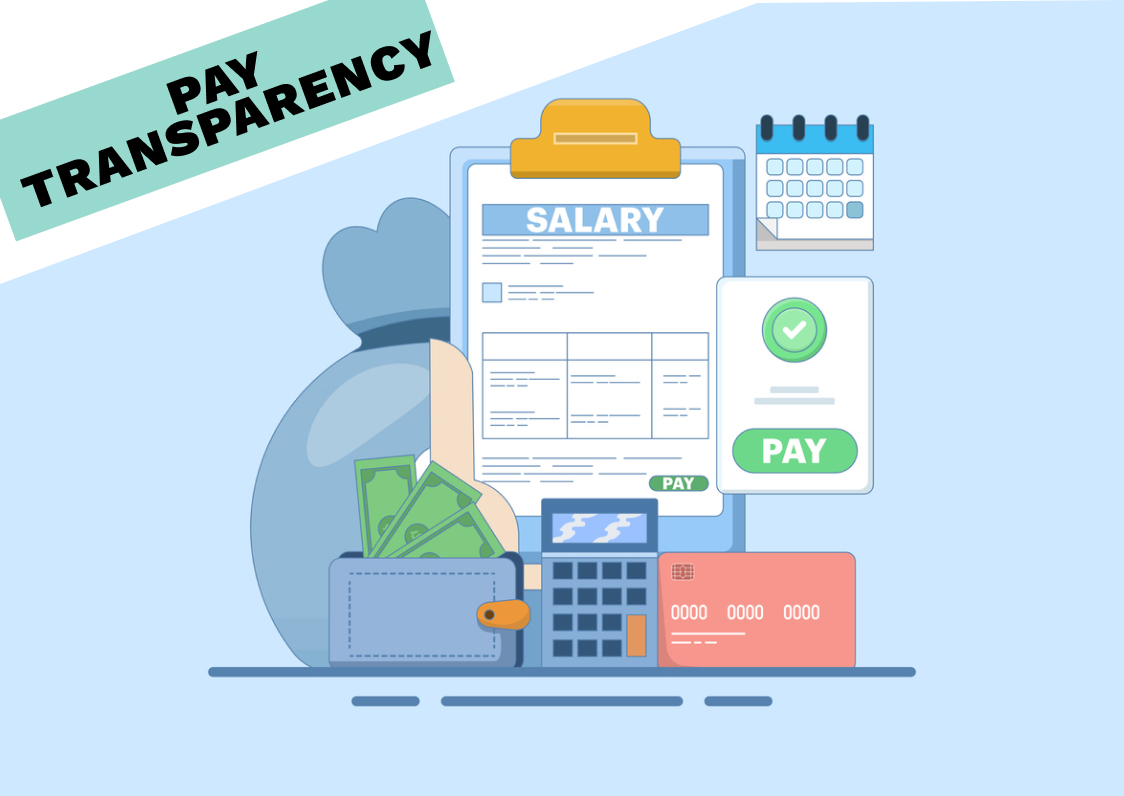Pay transparency is the topic of the year in HR circles — and for good reason. Being more open about compensation can help businesses to drive pay equity and decrease their gender pay gaps. It can also help to improve morale, engagement and productivity, and make it easier to attract top talent.
While many companies are already seeing the benefits of pay transparency, those who haven’t yet given it much thought will soon have their hands forced by the EU pay transparency directive.
The new directive will make it harder for employers to remain shady about their pay practices, and give employees and job candidates a number of increased rights related to pay equity and fairness.
Despite this looming deadline, many European businesses don’t feel prepared for pay transparency in 2024. In this article, we’ll discuss some of the biggest barriers standing in these companies’ way — and how to overcome them.
Why is pay transparency important in 2024?
Before we dive into the barriers standing in the way of pay transparency, let’s take a closer look at some of the benefits of opening up about your compensation practices:
- Improved talent attraction and retention: Being transparent about pay can help you attract top talent by showing candidates that you’ll pay them what they’re worth. And people are also more likely to stick around if they feel they’re being paid fairly.
- Reduced gender pay gap: Pay transparency forces companies to uncover and correct internal inequities, which can have a huge impact on your gender pay gap. And this isn’t just a theory: our own research has shown that more transparent companies have smaller gender pay gaps.
- Increased morale and productivity: Being transparent about pay tells your employees that you care about treating them fairly — making them much more likely to be engaged and motivated at work.
- Enhanced employer brand: People want to work for companies that pay their employees fairly. Cultivating a reputation as a transparent employer can be a huge boost to your employer brand.
- Proactive compliance with new legislation: Once the EU pay transparency directive is in play, companies in Europe will have to get more transparent about their pay practices. You can make the transition easier by preparing now.
{{cta}}
5 key barriers to pay transparency
You get the idea: pay transparency has tonnes of advantages for employees and employers alike. So… why isn’t every company doing it?
Below, we’ll discuss some of the most common challenges that companies face when implementing transparent pay structures — and how to get around them.
1. Inconsistent pay practices
For many businesses, the way pay is determined is not consistent across the organisation. For example, pay decisions may largely be left to individual managers, who might all have different ways of deciding who gets what.
When pay is determined in this ad-hoc, case-by-case way, there are bound to be internal inequities at play. That means these companies could face legal action or damage to their reputation if information about their pay practices is made public.
This lack of standardisation is one of the first bridges that businesses need to cross on their journey to pay transparency. To start with, employers should develop clear, consistent processes for determining pay — like a well-designed salary band structure, for example. Businesses also need to provide training and direction to managers to make sure they understand the importance of standardised pay decisions.
Of course, developing and implementing these processes takes a lot of time, work and resources. But the reality is that with the EU pay transparency directive just around the corner, European businesses soon won’t have a choice. Better to prepare now than to be hit with hefty fines and penalties once the new rules are in force.
2. Fear of employee reactions
Transparent pay practices will inevitably reveal that some employees are paid less than others. This could cause discontent or dissatisfaction, even if those differences are justified.
And other employees are understandably wary of their salary being revealed to others simply because they’ve always seen this information as private and confidential.
One step to resolving this issue might be to reassure employees that pay transparency isn’t all or nothing. In reality, it’s rare for companies to share individual salaries with all employees and the general public.
The other key factor is having a well-designed, consistent salary structure that ensures everyone is paid fairly, and a compensation communication plan that helps employees to understand how their pay is determined. Put simply, employees are much more likely to accept their pay if they can see that there’s a fair, logical process behind it.
3. Concerns about privacy and data management
Practising transparent pay means dealing with a significant amount of data, which can be challenging for companies without the right resources and systems in place.
When data contains inaccuracies or mistakes, this can lead to incorrect compensation decisions and perceptions of unfairness. But keeping data accurate and up-to-date can be a challenge when it’s stored in multiple systems or databases.
One way to address these challenges is to use a compensation management platform, like Figures. These tools act as a single source of truth for your compensation data, so you’ll always know the information you have is accurate and updated.
It’s also important to make sure that you keep employee data confidential and comply with data protection regulations like the GDPR. Companies should establish data governance policies and provide training to ensure these are adhered to. If you do use a compensation management tool, you should make sure it has a robust privacy policy.
4. Manager resistance
In most organisations, managers are on the frontline when it comes to communicating with employees about pay. That means they play a vital role in the journey towards pay transparency — and getting them on board is crucial.
But some managers are resistant to efforts towards transparency because they fear they’ll lose control over compensation decisions. Others are uncomfortable with the idea of sharing salary information, simply because it has long been considered confidential.
And some companies also have concerns about their managers’ ability to accurately answer employee questions about pay: in a 2020 survey, 61% of respondents said that their managers were not effectively trained to deliver pay communications.
The first step to resolving this is getting manager buy-in by involving managers in the process of developing and implementing transparent pay policies. You should also provide training that emphasises the proven benefits of pay transparency, like increased employee engagement and productivity.
Lastly, it’s also important to equip managers with the skills they need to effectively communicate about pay with their teams. This doesn’t come naturally to all managers, but targeted training can help them to get it right.
5. Increased administrative burden
For many organisations, the biggest barrier standing in the way of pay transparency is simply the amount of time and resources it will take.
And there’s no denying it: implementing new compensation policies, structures and processes won’t happen overnight. It’s also not something that can be done once and forgotten — your strategy will need to be continuously reviewed, iterated and improved on.
But the hard truth is that, with the EU pay transparency directive just around the corner, European companies can no longer dodge the issue. If your business is based in the EU, your compensation practices are about to get a lot more public.
Here’s the good news, though: there’s still time to get your structure and processes in place before the directive comes into effect. And preparing early is actually much less labour-intensive than scrambling to comply once the rules are in force.
{{cta}}
Get ready for pay transparency with a compensation management tool
If you want to be more transparent about compensation, you need to be sure that your pay structures stand up to scrutiny. That means setting up consistent and scalable processes that help you to determine fair pay rates, identify inequities and reduce your gender pay gap.
And a compensation management platform like Figures can be a powerful tool in helping you to achieve that goal.
Using Figures, you can manage all of your compensation data in one place, and kick bias to the curb by standardising pay practices across your organisation. You can use Figures to benchmark salaries, set up salary bands and even manage your entire compensation review process.
Every decision will be tracked and recorded in real time, and backed up by solid data — helping you to prepare for pay transparency.
Want to learn more? Book a demo to see Figures in action.
Summarize this article with AI
No time to read it all? Get a clear, structured, and actionable summary in one click.




![How Countries Are Implementing the EU Pay Transparency Directive [Updated December 2025]](https://cdn.prod.website-files.com/67d7e1e2f12d2942bb8d0309/6800da19bf0ad5c3d89c6d56_67e2c2cbef618bc98559ce0c_679b9fd8dac8fc3762b7e816_General%252520Topic.avif)

